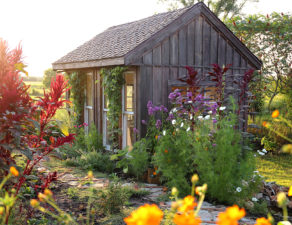
Natural and herbal treatments are rapidly growing in popularity, and you might be spending a good deal of time in the tea aisle of your supermarket. But have you ever considered growing your own teas? In doing so, you could ensure that your plants are organically grown, and you would can create personalized blends based on your needs and preferences. In addition, many tea growers report that their homegrown teas pack a much more robust flavor than the varieties commonly found in the grocery store (probably due to the freshness).
Choosing plants. Your first step will be to choose the plants that appeal most to you. A glance in your pantry should tell which which teas you drink most often, but you might also be interested in a variety that has been difficult to find locally. Some of the most common medicinal teas include lavender, lemon balm, chamomile, camelia, and mint. Some internet research will help you identify the varieties that might be most beneficial to you.
Some flowers can also be used in tea. Rose hips, for example, add a delicious flavor and are packed with vitamin C.
It’s a good idea to start off with only one to four varieties of tea plants, unless you’re already a very experienced grower. Once you begin honing your skills, you can add more variety to your garden.
Most tea plants do well in a sandy loam fortified with a small amount of compost. Make sure the soil drains well, and choose a sunny spot in your yard. In most cases, you can simply include your new plants in your existing vegetable garden, if you have one.
Many herb and tea plants can be grown in containers, so you don’t even need a large garden area. A sunny balcony or patio will suffice! In fact, mint and lemon balm are so invasive in the garden that using containers for those plants is a terrific idea.
Preparing your tea. You can prune your tea plants three to four times per year, and each pruning should yield new buds and leaves. After chopping leaves (or flowers, when applicable), you can brew them straight into tea or dry them for later. If you dry your tea, spread the chopped clippings onto a cookie sheet and bake in the oven at a low temperature for about 15 minutes. Then, store your tea in an airtight container.
Those who home-brew their tea say that the difference is like comparing homemade bread to the store-bought varieties. In other words, get ready for a treat! Remember to experiment with different blends, and try adding honey or citrus peel as an additive. You can find plenty of homemade tea recipes online, but following your own taste buds might be the best!









Write a comment: